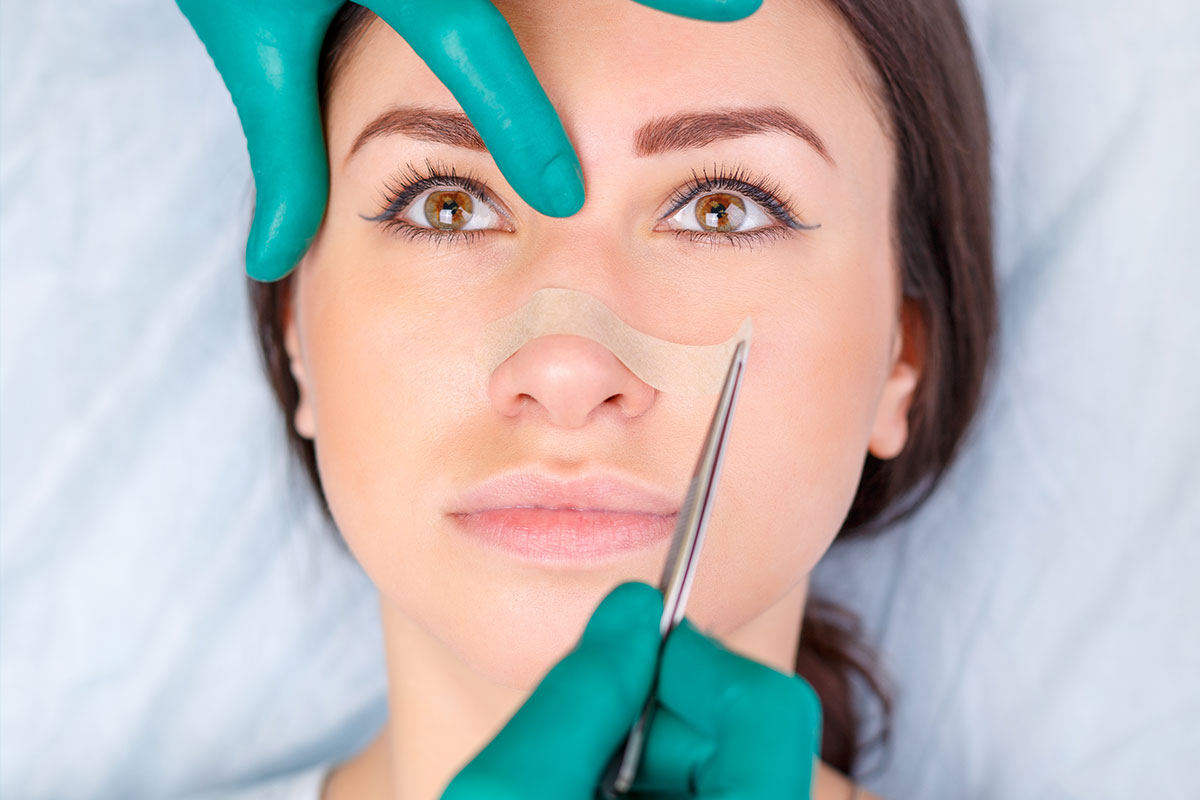Undergoing rhinoplasty surgery in Riyadh, like any surgical procedure, involves inherent risks and potential complications that prospective patients must thoroughly understand before making a decision. While choosing a highly qualified and experienced surgeon in a reputable clinic significantly minimizes these risks, it's crucial to be well-informed about the possibilities. This comprehensive overview delves into the various risks associated with rhinoplasty in Riyadh, encompassing both general surgical risks and those specific to the procedure.

General Surgical Risks:
These are risks associated with any surgical intervention, regardless of the specific procedure:
- Adverse Reaction to Anesthesia: Anesthesia, whether local with sedation or general, carries a small risk of adverse reactions. These can range from mild nausea and vomiting to rare but serious complications such as allergic reactions, breathing difficulties, or malignant hyperthermia. A skilled anesthesiologist will carefully monitor the patient throughout the surgery to mitigate these risks.
- Infection: Surgical site infections can occur despite strict sterile techniques. These infections can range from superficial skin infections to deeper tissue involvement, potentially requiring antibiotic treatment or, in rare cases, further surgical intervention. Maintaining proper wound care post-operatively is crucial in preventing infections.
- Bleeding (Hemorrhage): Some bleeding is expected during and immediately after surgery. However, excessive bleeding or the formation of a hematoma (a collection of blood under the skin) may require drainage or further treatment. Avoiding medications that thin the blood, such as aspirin and certain supplements, before surgery can help reduce this risk.
- Poor Wound Healing or Scarring: While rhinoplasty incisions are typically small and strategically placed to minimize visibility, there is always a risk of poor wound healing or the development of noticeable scars, particularly with open rhinoplasty where a small external incision is made on the columella. Factors such as individual healing tendencies and adherence to post-operative care instructions can influence scarring.
- Blood Clots (Thrombosis): Although less common with facial surgeries compared to lower body procedures, the risk of developing blood clots in the legs (deep vein thrombosis) or lungs (pulmonary embolism) exists, especially in patients with pre-existing risk factors or during prolonged periods of immobility after surgery. Early ambulation, when advised by the surgeon, can help prevent this.
Risks Specific to Rhinoplasty:
These risks are directly related to the reshaping of the nose and the surrounding structures:
- Breathing Problems: While rhinoplasty can often improve breathing, in some cases, it can paradoxically lead to or worsen nasal obstruction. This can occur due to internal swelling, scarring, or structural changes within the nose.
- Nosebleeds: Occasional nosebleeds are common during the initial recovery period. However, persistent or heavy nosebleeds require medical attention.
- Numbness or Changes in Skin Sensation: Temporary numbness or altered sensation in the nose and surrounding areas is common after rhinoplasty due to nerve disruption. This usually resolves gradually over weeks or months, but in rare cases, it can be permanent.
- Asymmetry: Achieving perfect symmetry in the nose is challenging, and minor asymmetries can sometimes be noticeable post-operatively. While surgeons strive for balance, subtle differences between the two sides of the nose can persist or become apparent as swelling resolves.
- Septal Perforation: This is a rare but potential complication where a hole develops in the nasal septum (the wall separating the nostrils). It can result from excessive trauma during surgery, infection, or poor healing. A small perforation may not cause any symptoms, but larger ones can lead to whistling sounds during breathing, nosebleeds, or crusting. Surgical repair may be necessary.
- Unsatisfactory Cosmetic Outcome: This is a significant concern for many patients. The final aesthetic result may not meet the patient's expectations due to factors such as unpredictable healing, limitations of the surgical technique, or a mismatch between the patient's desires and what is surgically achievable. Revision rhinoplasty may be considered in such cases, but it is often more complex than the primary procedure.
- Persistent Pain: While post-operative pain is expected and usually manageable with medication, some individuals may experience persistent or chronic nasal pain after rhinoplasty.
- Changes in the Sense of Smell: Temporary changes in the sense of smell are not uncommon due to swelling and congestion. However, permanent loss or alteration of smell is a rare but possible complication.
- Need for Revision Surgery: Due to the complexities of nasal anatomy and the unpredictable nature of healing, a significant percentage of rhinoplasty patients may require revision surgery to address residual deformities, functional issues, or aesthetic concerns. It is essential to have realistic expectations and understand that a secondary procedure may be necessary.
Minimizing Risks in Riyadh:
Choosing a board-certified plastic surgeon or ENT surgeon in Riyadh with extensive experience specifically in rhinoplasty is the most crucial step in minimizing risks. During your consultation, ensure the surgeon thoroughly evaluates your nasal anatomy, understands your goals, and clearly explains the potential risks and benefits of the procedure. Don't hesitate to ask questions and express any concerns you may have. A reputable clinic will adhere to strict safety protocols and provide comprehensive pre- and post-operative care instructions.
By being well-informed about the potential risks and choosing a skilled surgeon in a quality facility in Riyadh, you can approach your rhinoplasty journey with greater confidence and a realistic understanding of what to expect. Remember that open communication with your surgeon is key to a safe and successful outcome.




Comments